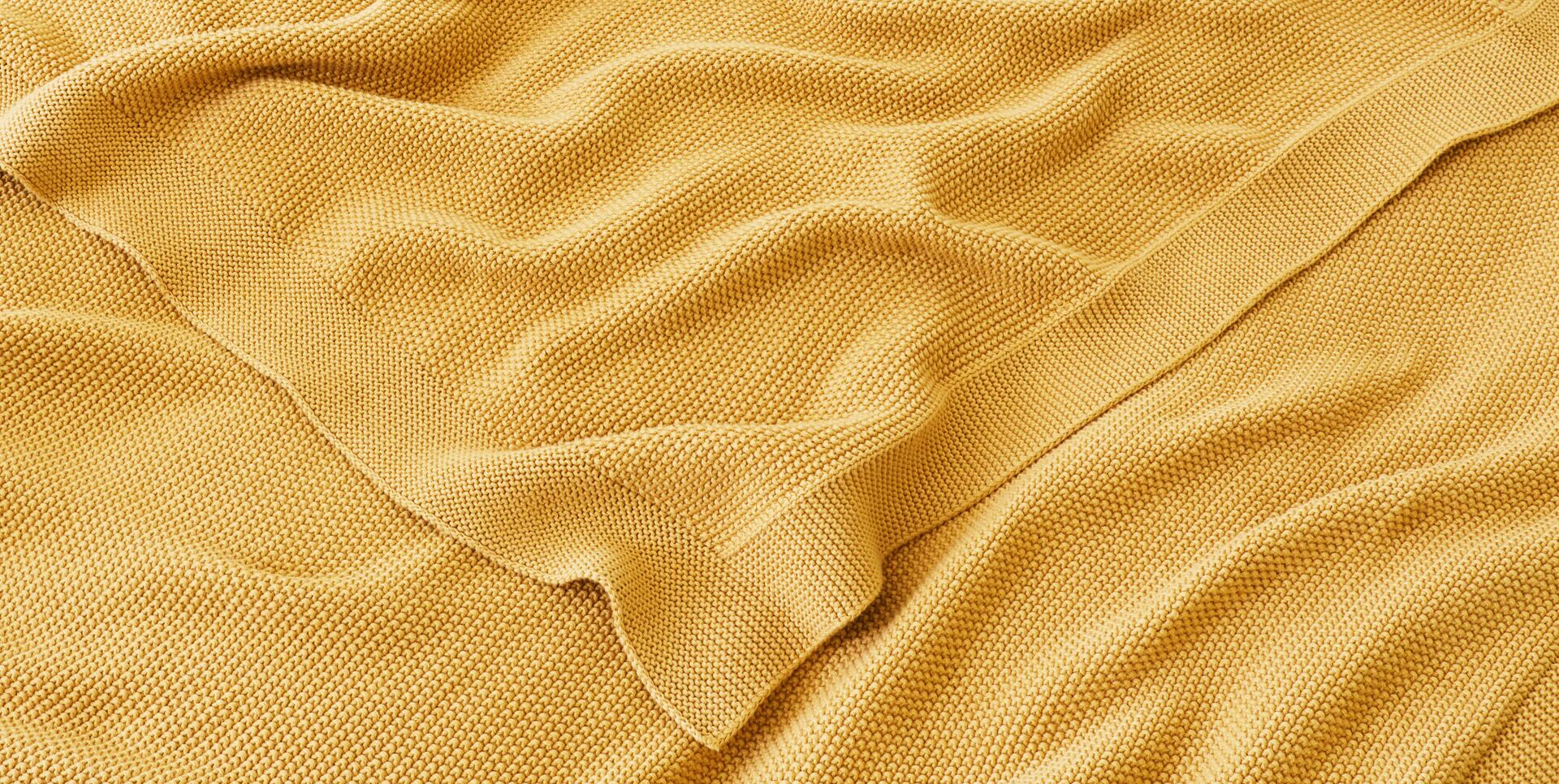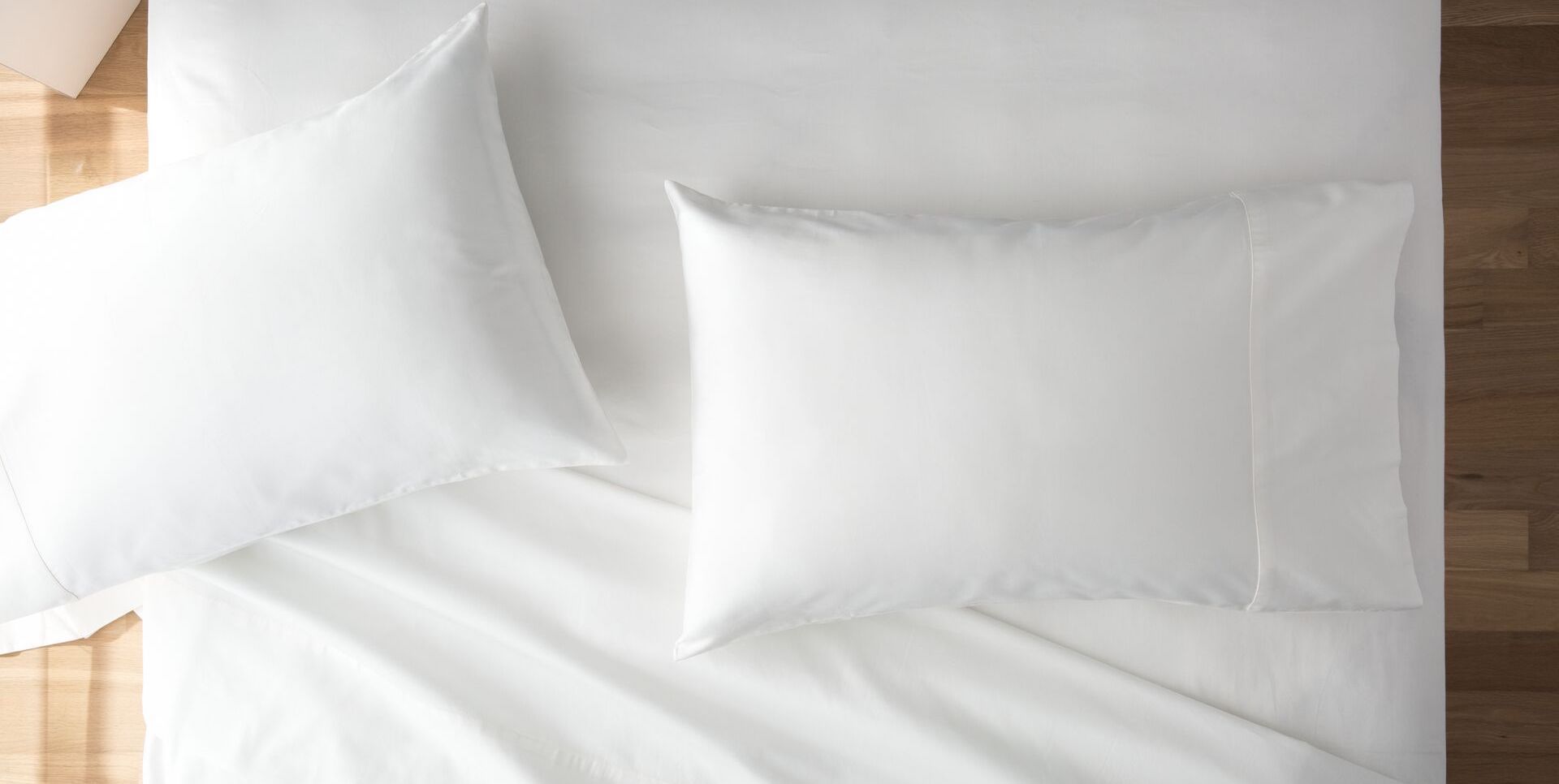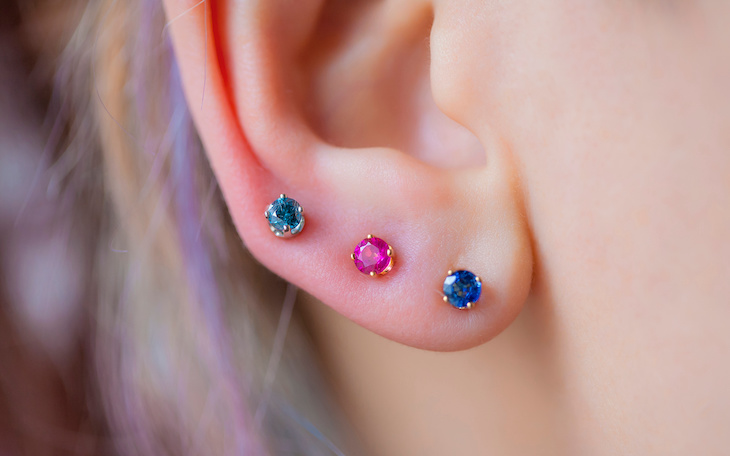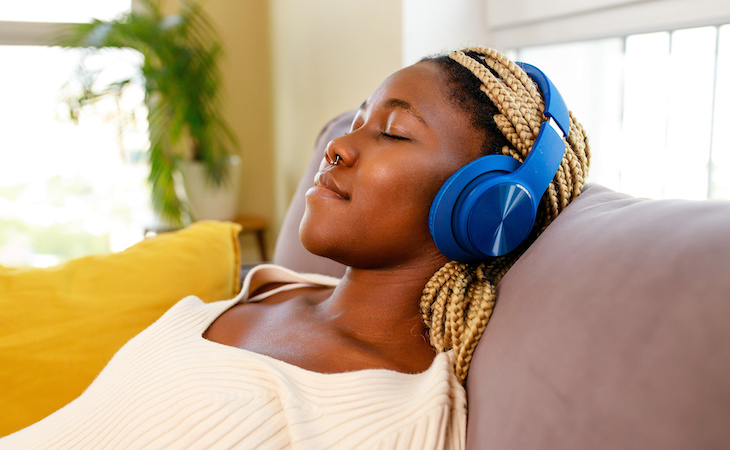Earrings are a great way to accessorize your look—and for good reason! With various colors and styles, earrings can be incorporated into a variety of outfits from casual to professional. They can be a fun way to express yourself, no matter the occasion

A supremely soft blanket that’s as cozy as your favorite sweater
.
However, the mild trauma that occurs after getting a new ear piercing necessitates a healing time of at least a few weeks. Because of the pain and swelling that can occur, many individuals wonder how to sleep with new piercings to promote healing, reduce pain, and minimize side effects.
This article will discuss how to sleep better with new ear piercings and ensure you continue to get restful sleep even during the healing phase.
Can you sleep with a new ear piercing?
The short answer is yes—you can and should sleep with a new ear piercing. This is because if you remove an earring from a new piercing before the piercing has completely healed, the piercing may close. That will make it difficult, if not impossible, to reinsert your earring.
The estimated healing time for an ear piercing is affected by the exact location of where you decide to get your ears pierced. Standard ear lobe piercings generally take six to 12 weeks to fully heal.
Helix piercings, which are piercings anywhere along the cartilaginous outer rim of the ear, take much longer to heal at around six to 12 months. You should confirm with your piercer how long it may take for your piercing to heal.
There are certain risks of sleeping with a new piercing to be aware of. These include further skin irritation, pain, headaches, and infections.
Skin irritation
The skin surrounding newly pierced ears can be susceptible to irritation, which can be exacerbated by prolonged time potentially spent sleeping on the area.
There can also be a risk of tearing the skin around the ear piercing. This is more likely to happen if hair gets inadvertently tangled in the piercing or if the piercing gets caught on your sheets or pillowcase.
Pain
Because an ear piercing is technically a small wound, there may be pain during the healing process which can be disruptive to sleep.
Headaches
Some people develop headaches as a result of sleeping with a new ear piercing. This is usually due to sleeping directly on the ear piercing. This can place pressure on the head at night and lead to headaches.
Infections
Ear piercings can put you at risk for an infection. Sleeping directly on an ear piercing can potentially increase this risk by trapping bacteria in the open wound.
How to sleep with a new ear piercing
Luckily, there are ways to offset some of these challenges that will make sleeping comfortably with a new ear piercing as effortless as possible.
First, try and sleep on your back. This will keep pressure off of your new piercing and minimize further irritation and pain.
Next, choose small studs as opposed to larger earrings when you initially pierce your ears. Smaller studs (sometimes referred to as “nap earrings”) aren’t only less likely to cause pain and discomfort should you lie on them, but they’re also less likely to get caught in your hair or on your pillow at night.
Additionally, if you have any known metal sensitivities such as a nickel allergy, you want to avoid jewelry that contains the allergen.
You may also benefit from trying to sleep with a travel pillow. These U-shaped pillows are usually worn around the neck to provide head and neck stability while sleeping sitting upright.
After an ear piercing, using this type of pillow while side sleeping in order to create a hollow opening in which to place your ear piercing can prevent direct pressure on the piercing and help you sleep better as well.
It might also be worth investing in sheets and pillowcases that have a smooth feel such as

Silky-soft cotton sheets with a graceful drape & slight luster
or silk. These materials may reduce snagging of the ear piercing. If you have long hair, you might consider sleeping with your hair tied back to avoid snagging as well.
Furthermore, be sure to cleanse your ear piercing before bed to rid the area of bacteria. On this same note, you may consider using a hypoallergenic pillowcase or washing your pillowcases more frequently to ensure optimal cleanliness and hygiene.
Lastly, if your pain is bad enough, you can consider taking a dose of an over-the-counter painkiller before bed—which may also help you sleep better with a new piercing.
As with any medication (even over-the-counter), you should always consult your own healthcare provider to ensure it’s safe for you to take. If your pain is severe or doesn’t improve with medication, you should seek care from a licensed medical provider.
The American Academy of Dermatology also recommends some general care measures to promote healing after ear piercings. These include:
- Wash your hands before touching new ear piercings.
- Gently wash ear piercings with a fragrance-free soap at least once per day.
- Anytime you wash your piercings, rinse thoroughly with water.
- Apply a thin layer of petroleum jelly to the surface of piercings since wounds that maintain moisture heal faster.
- Monitor your ear piercings for worsening soreness, redness, or pus. If any of these things occur, you should seek help from a medical professional.
The bottom line: While there can be some initial discomfort when you get your ears pierced, there are measures you can take to figure out how to sleep comfortably with a new piercing.
By following some of these tips, you can still get a good night’s sleep by reducing pain, irritation, and infection risk. You’ll not only have a stylish new piercing but will also be able to sleep comfortably with it—even during the first few weeks when the piercing is still healing.
FAQs
How can I protect my ear piercing at night?
There are several ways to protect your ear piercings at night. Sleep on your back to reduce pressure on the ear piercing and use a pillowcase that’s smooth to reduce snagging of your ear piercing at night. You can also use a travel pillow instead of your regular pillow, which can conveniently create a hollow space under an ear piercing at night to reduce pressure on the piercing.
How do you sleep comfortably with a new piercing?
Be sure to keep the piercing clean by routinely washing the area at least once per day. Try and sleep on your back to keep pressure off of the ear piercing, use a U-shaped travel pillow if you have to side-sleep, and, if needed, pull back your hair at night to prevent the piercing from getting caught. If you need, you can also consider an over-the-counter painkiller before bed.
Is it bad to wear a bra while you sleep? Here’s everything you need to know about sleeping with a bra on.








